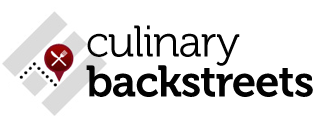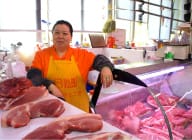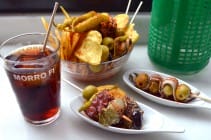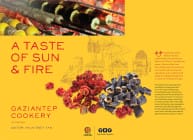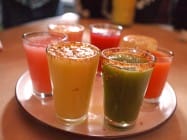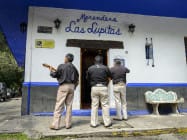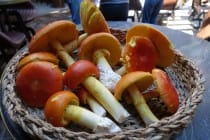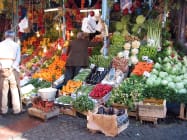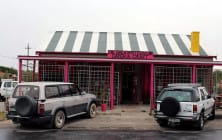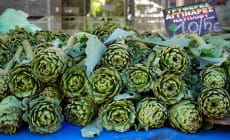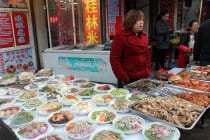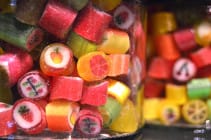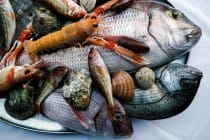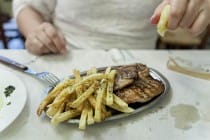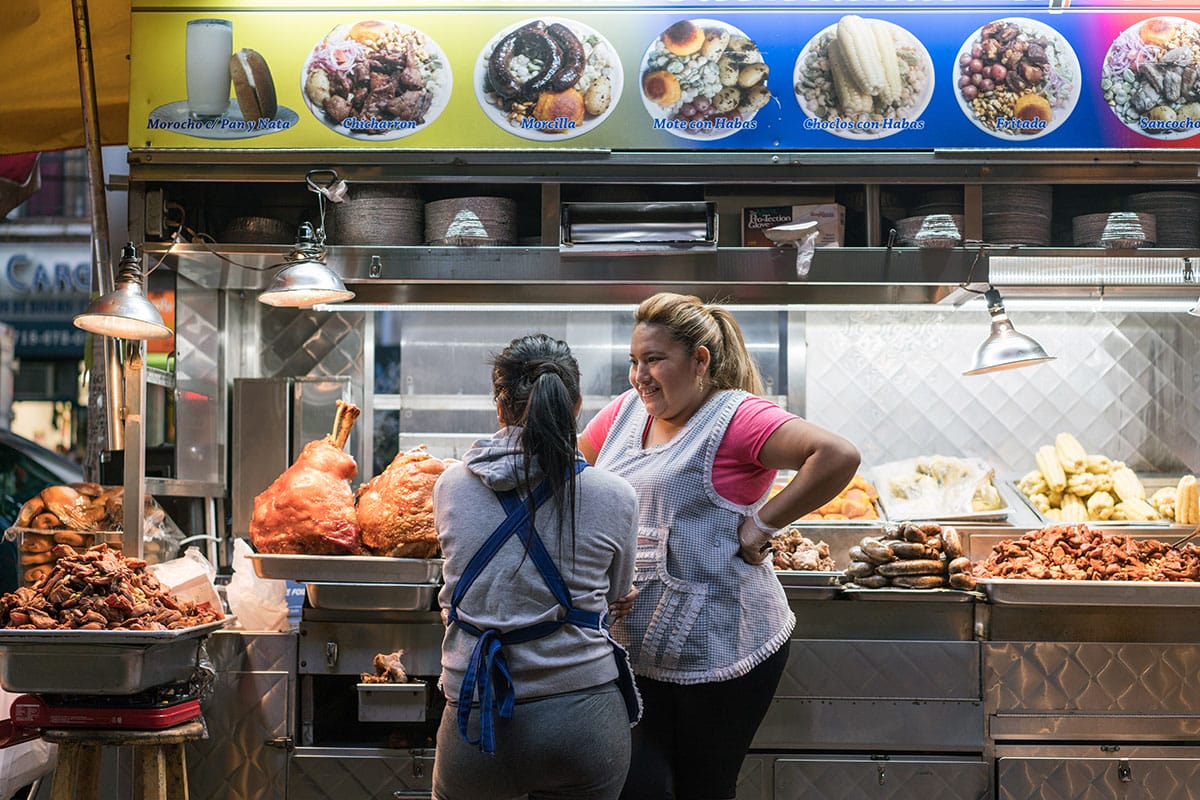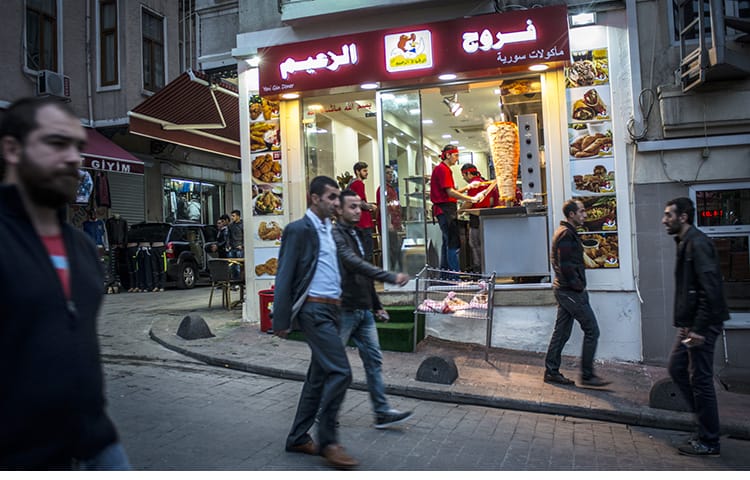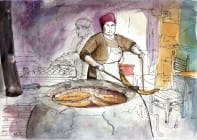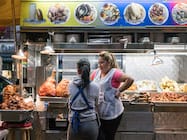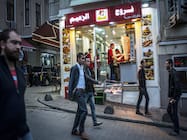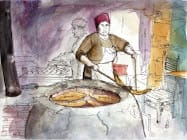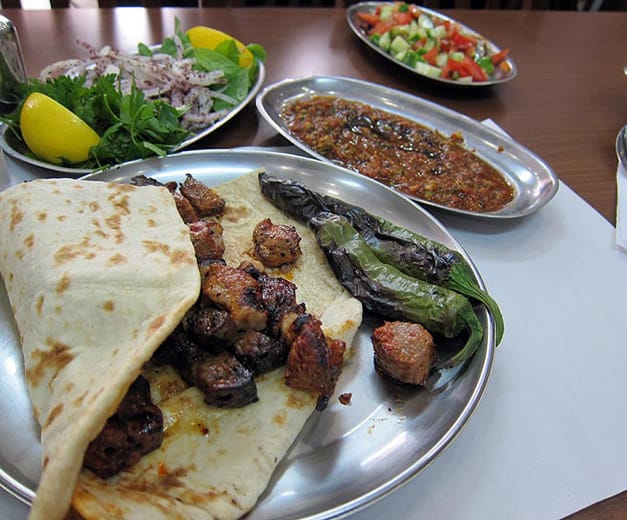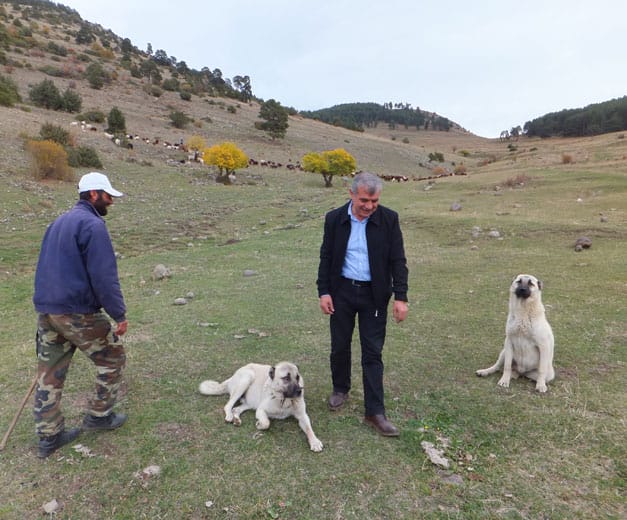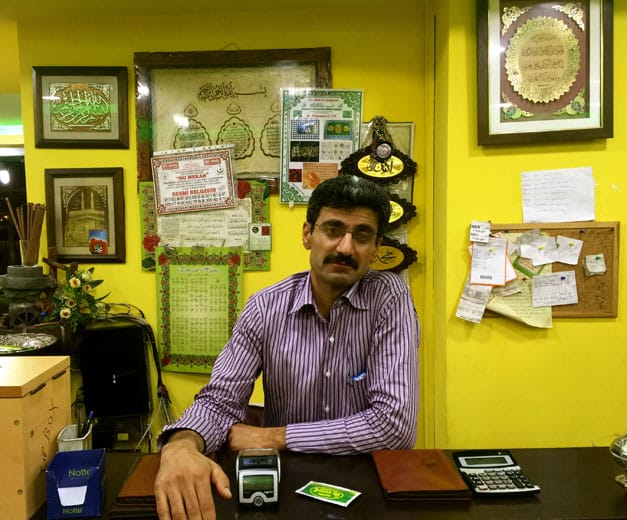Near the Aksaray metro station, set back from a loveless part of Istanbul crossed by wide roads and overpasses, the kebab is flourishing. Over the past few decades, waves of migration have brought a particularly southeast Anatolian flavor to the otherwise drab apartment blocks and government buildings of this part of the Fatih district. Now bright isot peppers are strung up, handwritten signs in Arabic advertise services in barbershop windows, a nargile café is filled with older men smoking and playing cards. Nowhere else in the city is there such a high density of kebab restaurants and most of them are run by families from the southeastern city of Urfa.
“This is an area that all Urfalı people come to. The more Urfalı people, the more kebab makers there will be, quite naturally,” said Bedih Zaman, a third-generation kebapçı and the proprietor, with his father, Babo, of Babo’nun Yeri.
One of more than 20 kebab restaurants on the same block, Babo’nun Yeri has that certain combination of size (small), décor (Anatolian kitsch) and smells (puffs of hypnotizing grill smoke) vented out onto the sidewalk that we look for in a restaurant. And unlike nearly all of his neighbors, Babo doesn’t stand outside begging for customers – they come to him.
Babo’s single room is dominated by a long, shallow grill located behind a high service counter. The walls are covered with framed pictures of mustachioed men eating kebab, which lends the place a clubby atmosphere that’s a welcome change from the many larger, sterile-looking kebab restaurants down the street. Bedih continued, “People like this place because it’s salaş [dumpy] and we serve good food.”
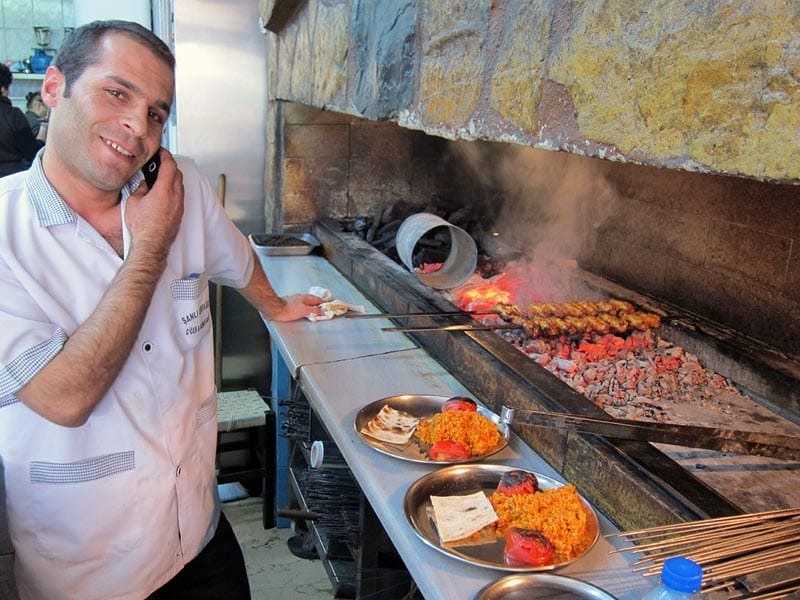
Food, in Urfa terms, is a euphemism for grilled lamb liver, and at Babo this is the specialty. During a recent lunch rush, nearly every table was covered with the trappings of a big liver lunch: plates of onions sprinkled with sumac, fresh mint, parsley and wedges of lemon, as well as of acılı ezme, a tangy relish of tomatoes and onions chopped together with dried red pepper flakes and drizzled with pomegranate molasses and of a small salad of cucumbers and tomatoes. All of this accompanied by a stack of fresh thin lavaş flatbread from the bakery around the corner.
A single order of skewers – like the one that arrived at our table – entitles Babo’s guests to all of these sides. True to form, it was a generous portion of cubed liver roughly the size of backgammon dice, half-covered, seductively, by a lavaş of its own. Under this lavaş blanket, tiny charred bits of sheep tail fat clung to the soft, medium-rare liver. Grilled liver must be eaten quickly, while its surfaces are still alive with sizzle, so we took a piece of still-warm lavaş and laid down a line of onions, then some shredded grilled peppers along with half of the liver and sprinkled it with salt and a squirt of lemon. We rolled it into a dürüm (the Turkish name for a wrap) and assumed a position so familiar in these parts that many southeasterners use it as sign language for eating. Leaning slightly forward, head down, hand over hand, we chowed down on the liver-loaded dürüm. Such an unsophisticated vessel concealed a complex variety of flavors. The tangy/sour sumac on the onions was followed by a slow wave of low-register heat from the peppers. These two pulses made way for smoky nuggets of liver and rich fat.
It was a symphony of just a few notes.
(Note: There are two branches of Babo’nun Yeri on the same street, so please check the address for the original location.)
 November 24, 2015 CB on the Road
November 24, 2015 CB on the Road
Şehzade Erzurum Cağ Kebabı is one of our favorite places in Istanbul for a satisfying, […] Posted in Istanbul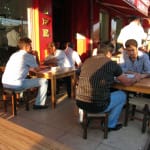 November 13, 2015 First Stop
November 13, 2015 First Stop
Editor's note: In the latest installment of our ongoing series First Stop, we asked […] Posted in Istanbul September 28, 2015 Meşhur Öz Suruç
September 28, 2015 Meşhur Öz Suruç
To the uninitiated, the restaurant owners of a small corner of Istanbul’s Yenibosna […] Posted in Istanbul
Published on January 08, 2014
Related stories
November 24, 2015
IstanbulŞehzade Erzurum Cağ Kebabı is one of our favorite places in Istanbul for a satisfying, lamby meal. You could easily walk past its handful of outdoor tables, tucked into a bustling pedestrian-only shopping street in the Sirkeci neighborhood. But if you stay, proprietor and head grill master Özcan Yıldırım will make you an unforgettable dish.…
November 13, 2015
Istanbul | By Culinary Backstreets
IstanbulEditor's note: In the latest installment of our ongoing series First Stop, we asked Stavriani Zervakakou, chef of the restaurant Karaköy Gümrük in Istanbul, where she stops first for food when she returns to Istanbul. (We've written previously about her First Stop in Athens.) Lamb liver skewers in the Aksaray district’s Horhor neighborhood; domatesli kebap with…
September 28, 2015
IstanbulTo the uninitiated, the restaurant owners of a small corner of Istanbul’s Yenibosna neighborhood might come off as having an unhealthy obsession with particularly garish versions of the colors yellow and green. As we recently explored the lower end of the Yenibosna neighborhood, one of Istanbul’s large periphery boroughs, we stumbled upon a small cluster…

